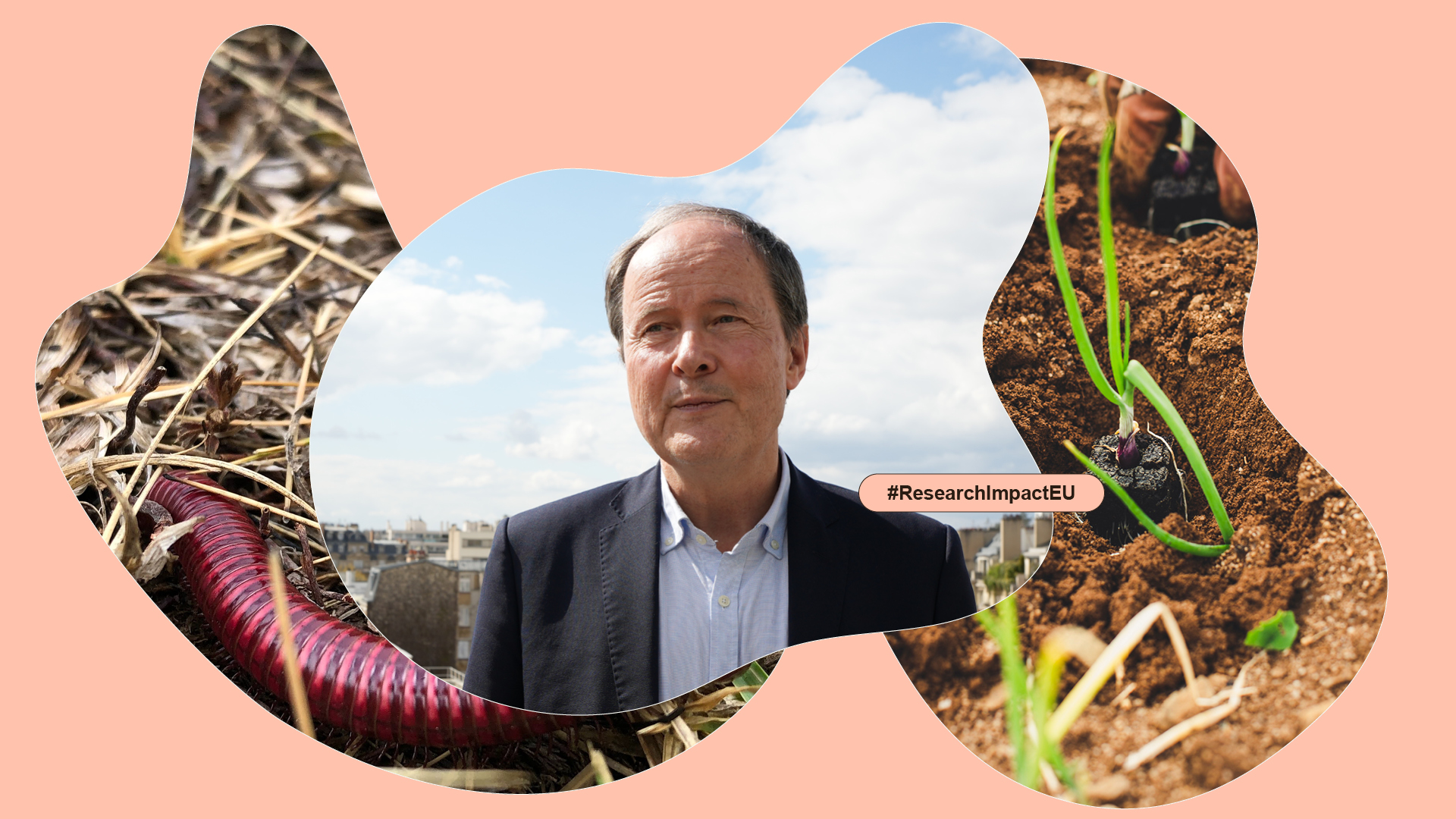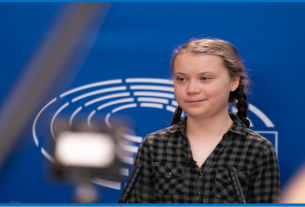English version, Version française
Without soil, there is no life on earth
Bispo and his fellow researchers at CIRCASA project developed a methodology for measuring organic carbon in soil, so that farmers can then adopt tailored approaches to increasing carbon in soil and thereby improve soil health.
Preserving healthy soil is vital. It contains the nutrients upon which humans depend – and which we absorb through food crops. Intensive farming, overuse of agricultural chemicals, other contaminants, erosion and climate change, pose threats to the integrity and quality of our soil, whose long-term consequences are not yet fully understood. But we do know that one centimetre of soil that can take hundreds of years to form can be lost in a single rainstorm.
“
Increasing carbon in soil is a win–win solution. You improve the soil, and at the same time mitigate climate change.
Setting soil standards
Carbon is naturally occurring – the fourth most abundant element in the universe by mass after hydrogen, helium and oxygen – which we want to limit in the atmosphere to reduce global warming, but which when added to soil enhances soil structure, biodiversity and fertility. How exactly does sequestration, or capture, of carbon work? Bispo explains:
‘Agricultural fields can act as a carbon sink through sequestering carbon dioxide. During photosynthesis crops remove carbon dioxide from the atmosphere and create biomass. When the plants die the carbon goes to the soil: part is used by soil organisms, while the other part accumulates – this is the process of carbon sequestration in soil.’
Bispo was part of an international consortium that included researchers from Germany, France, the Netherlands and the UK, but also from as far away as Australia, Brazil, China, the United States and Madagascar. The effort was coordinated by his fellow Paris-based senior scientist Jean-Francois Soussana, and it has now introduced standards in the monitoring of soil carbon among the world’s leading soil-carbon experts.
‘Soil is a huge reservoir of organic carbon,’ explains Soussana. ‘Storing it in agricultural soil contributes to carbon dioxide removal from the atmosphere, to increased soil health, and to the climate change resilience of agriculture.’
The research, says Soussana, ‘mapped for the first time at global scale the current changes in organic carbon stocks of croplands and grassland soils. We identified the potential to store more carbon, and how to monitor this carbon storage in soil through a unique combination of remote sensing, data and calibrated models.’
EU research and innovation connects people locally and globally to transform research results into solutions that benefit us all.
Reaping what you sow
Farmers are the ultimate guardians of the soil, and the application of carbon-storage techniques is just one of the ways soil can be protected long term. The consortium surveyed 4 000 farmers across 10 world regions as part of the initiative, which aimed to answer three main questions from farmers: how they would get paid for increasing carbon, how to get better knowledge on increasing soil carbon, and how to find a simple, cheap and accurate way of monitoring soil carbon.
“
Designing ways to increase soil carbon content, enhance soil biodiversity and reduce soil erosion is crucial for food security.
‘Most farmers are good observers of their soil,’ continues Soussana. ‘They would like to improve soil management, and know about organic matter as a driver of soil health. However, many farmers are not aware of the carbon cycle and of possible changes in their soil carbon stocks. This contributes to a slow adoption of improved practices such as cover crops, grass leys and reduced tillage.’
The remote sensing techniques employed during the research – using Sentinel satellites – could become a ‘world standard’, says Soussana. They allow for the estimation of vegetation cover, organic carbon volume, and the carbon storage potential, of every farm and every field in the EU, and potentially the world.
The long-term ambition, of course, is to make every farmer in the world a sort of ‘carbon farmer’. Better soil health will improve agricultural productivity, with citizens reaping the ultimate benefits through a better diet.
‘Increasing carbon in soil is a win–win solution,’ remarks Bispo. ‘You improve the soil, and at the same time mitigate climate change.’
Research and innovation are critically important to develop and upscale knowledge, practices and innovations that will help transitioning towards more sustainable farming systems and rural communities.
Science, research and innovation: our secret ally
This research is part of the EU’s efforts to discover new ways to prepare for climate change, protect our oceans and waters, and fight cancer. Together, EU countries can work more effectively, by pooling funding and expertise from around the world, coordinating international efforts, and benefitting from local knowhow.
New knowledge and breakthrough innovation helps us move faster towards the sustainable and prosperous world. Thanks to EU investments, it is possible for international research collaboration to address challenges too big to be addressed by one country alone.
Join researchers on a mission to protect our planet and society, by sharing, liking and following the stories of #ResearchImpactEU.



